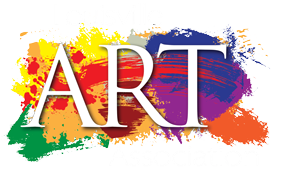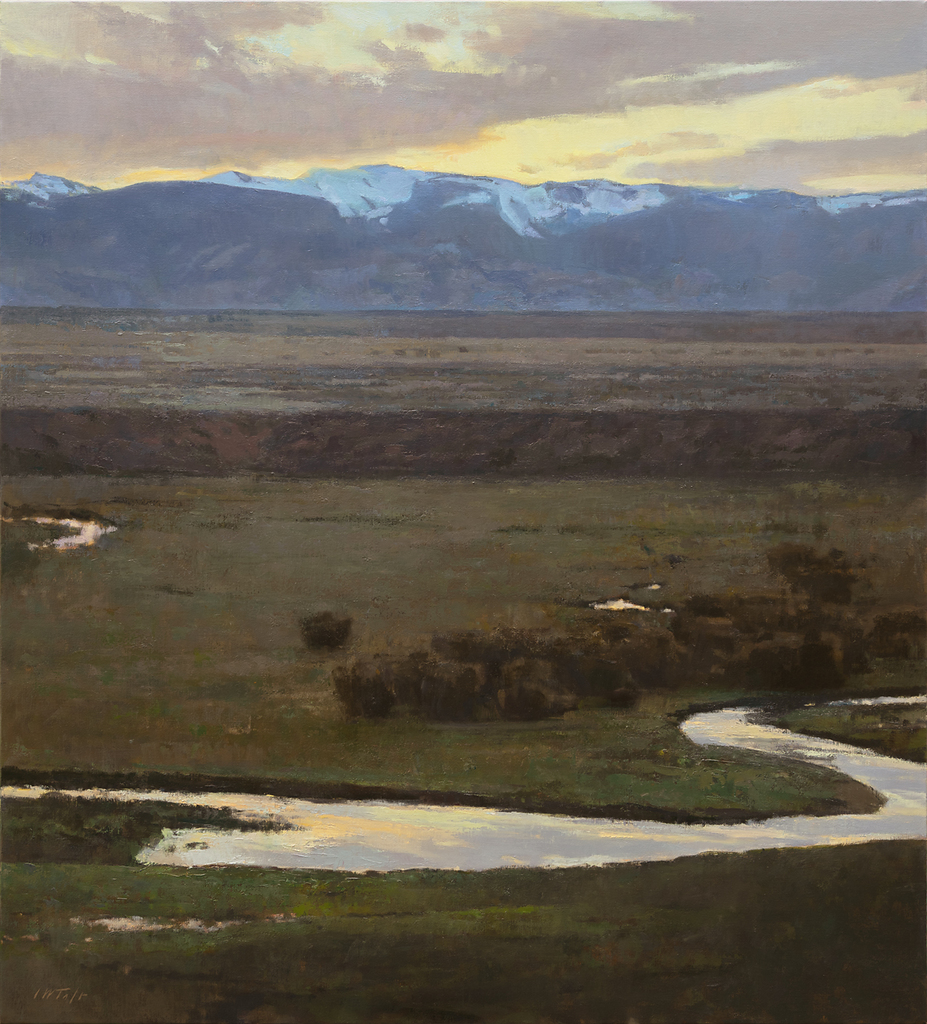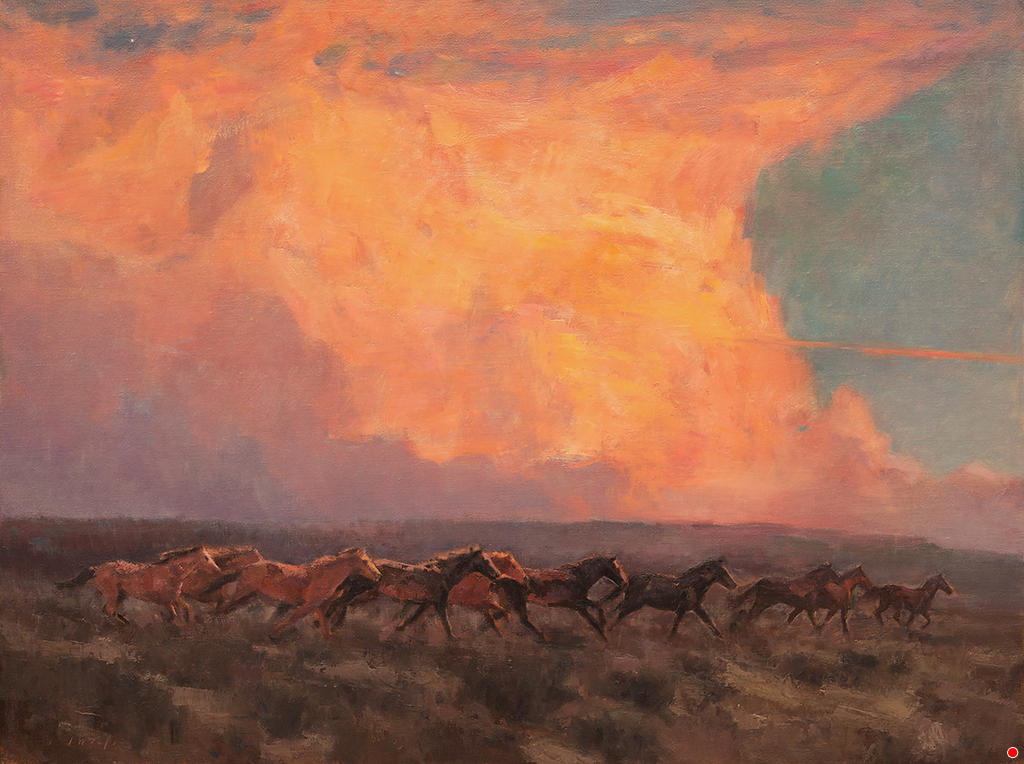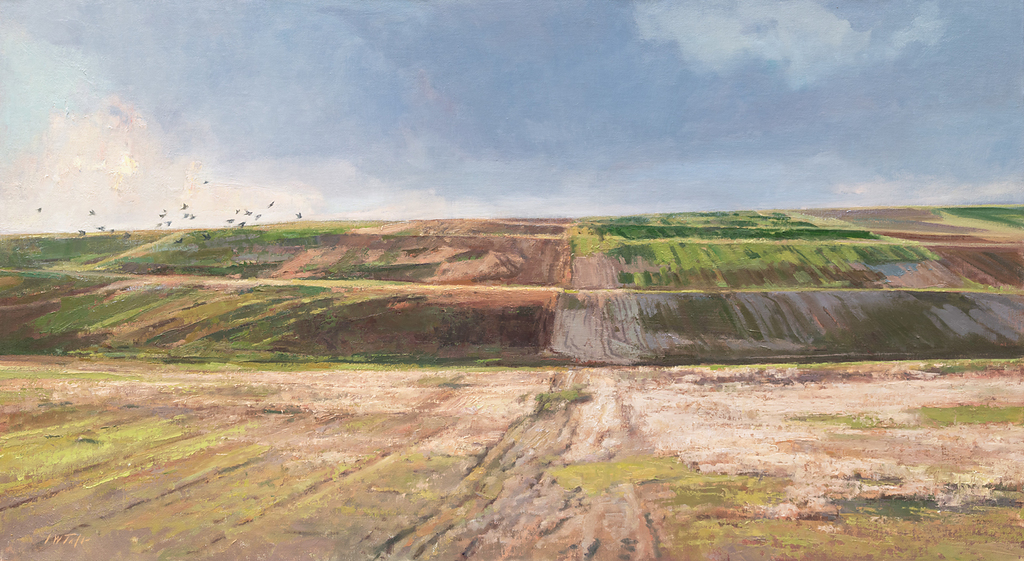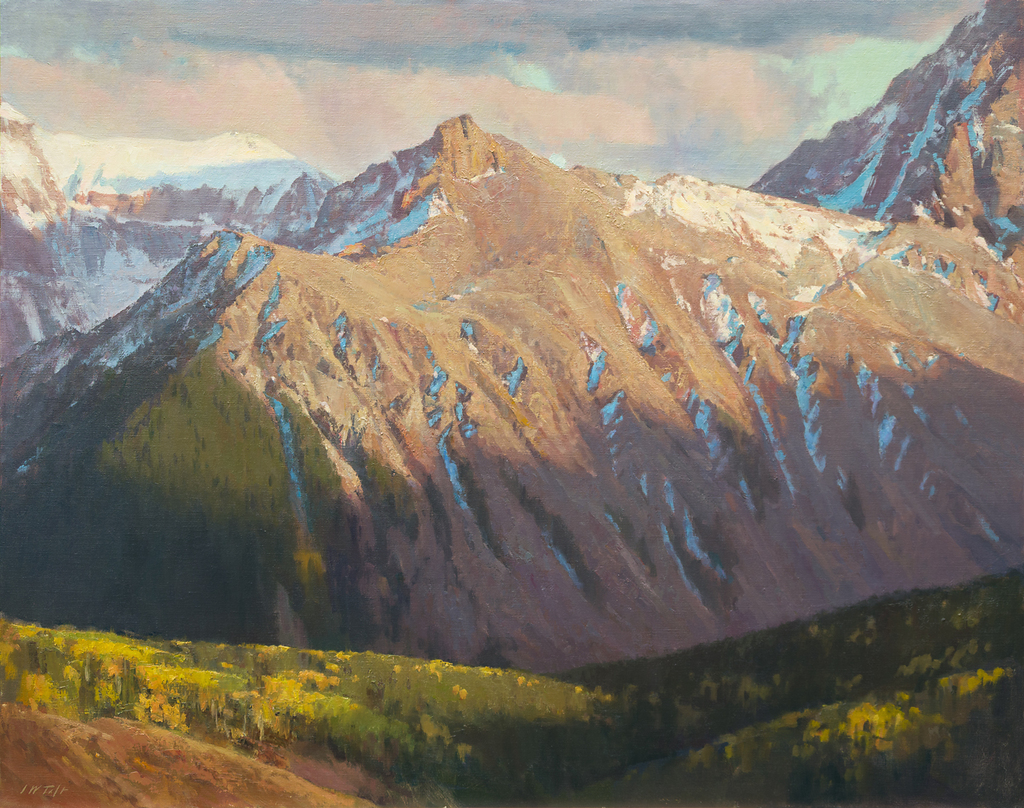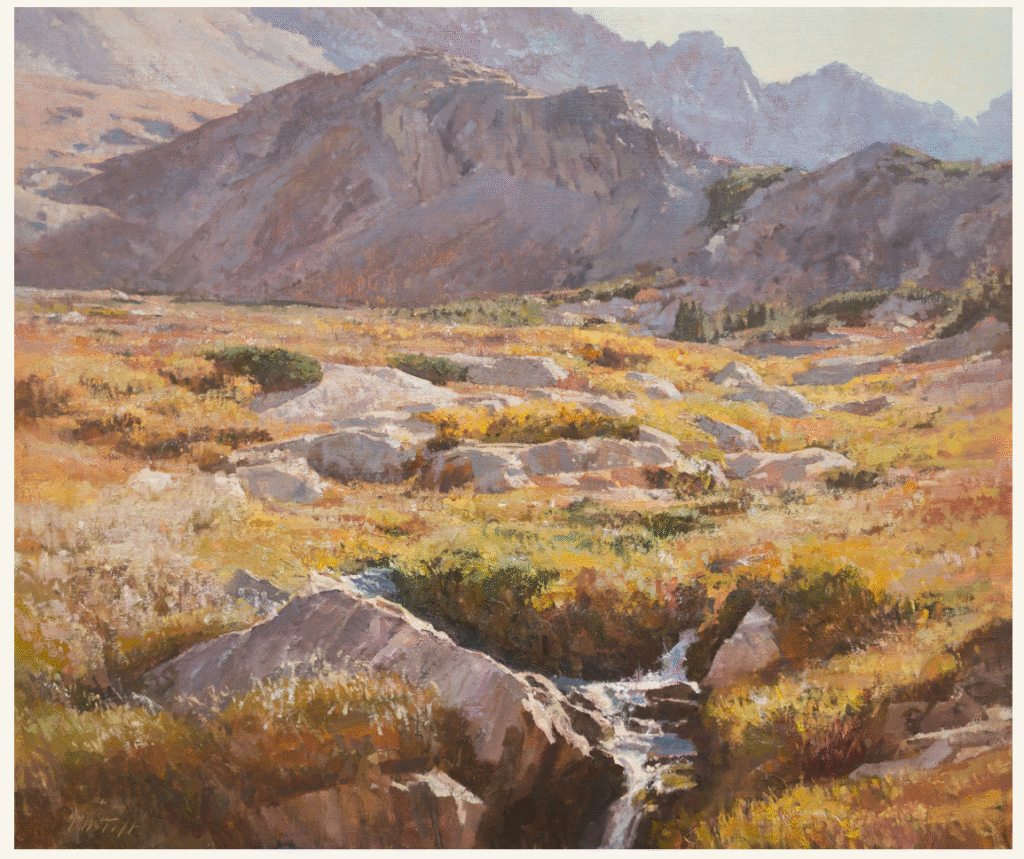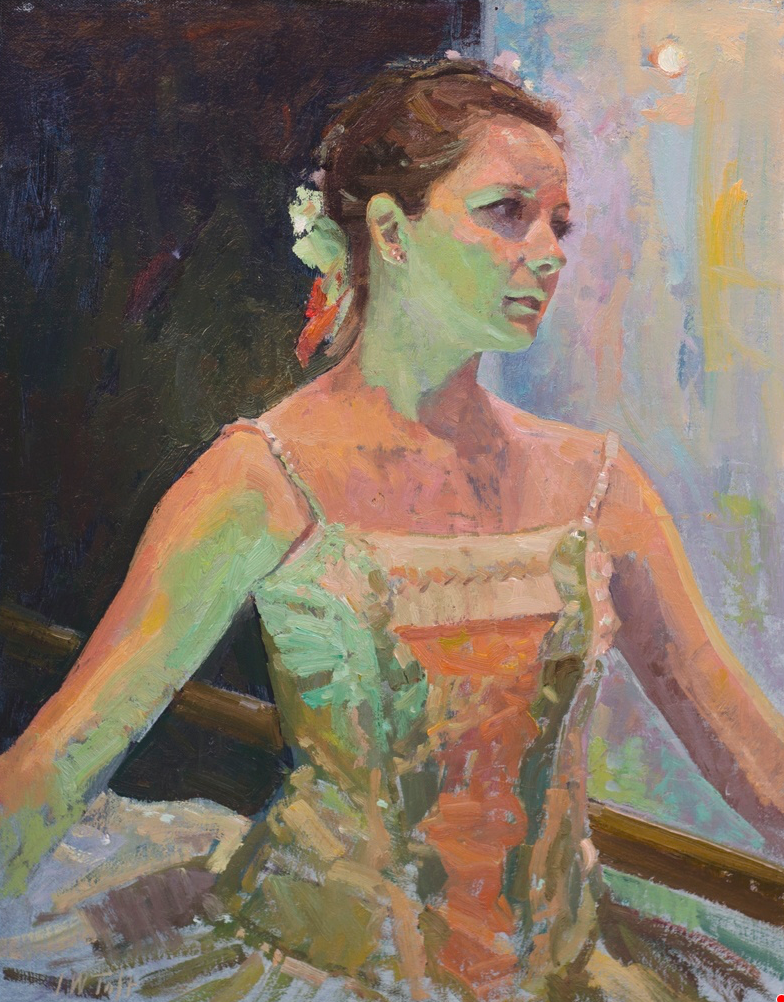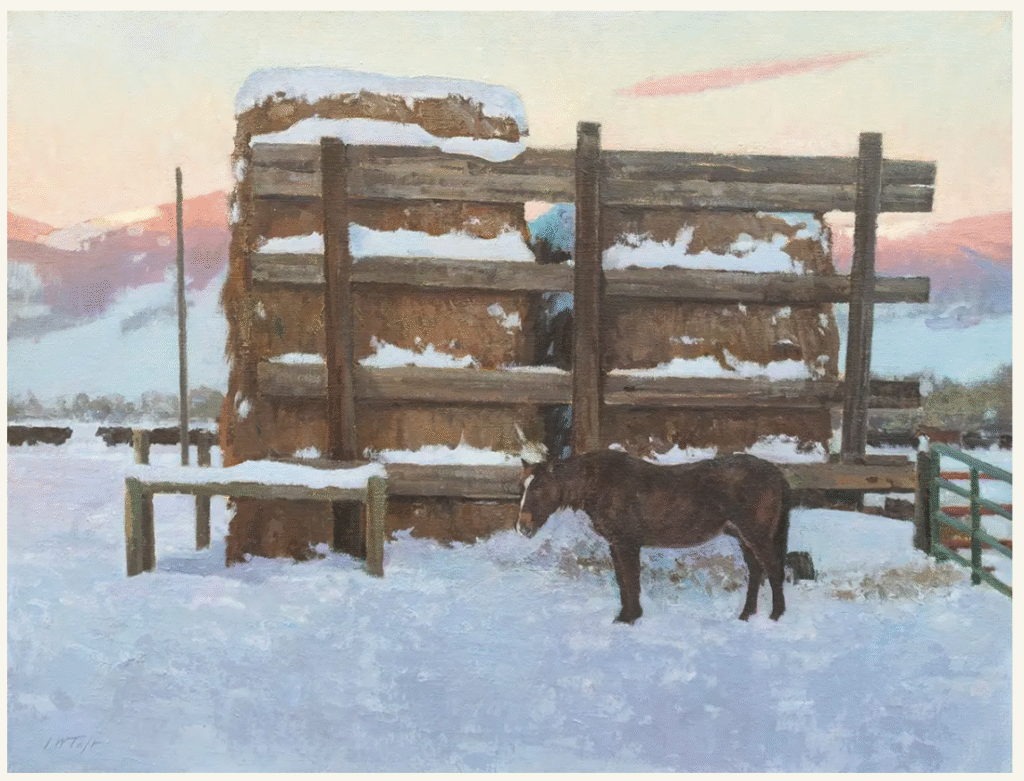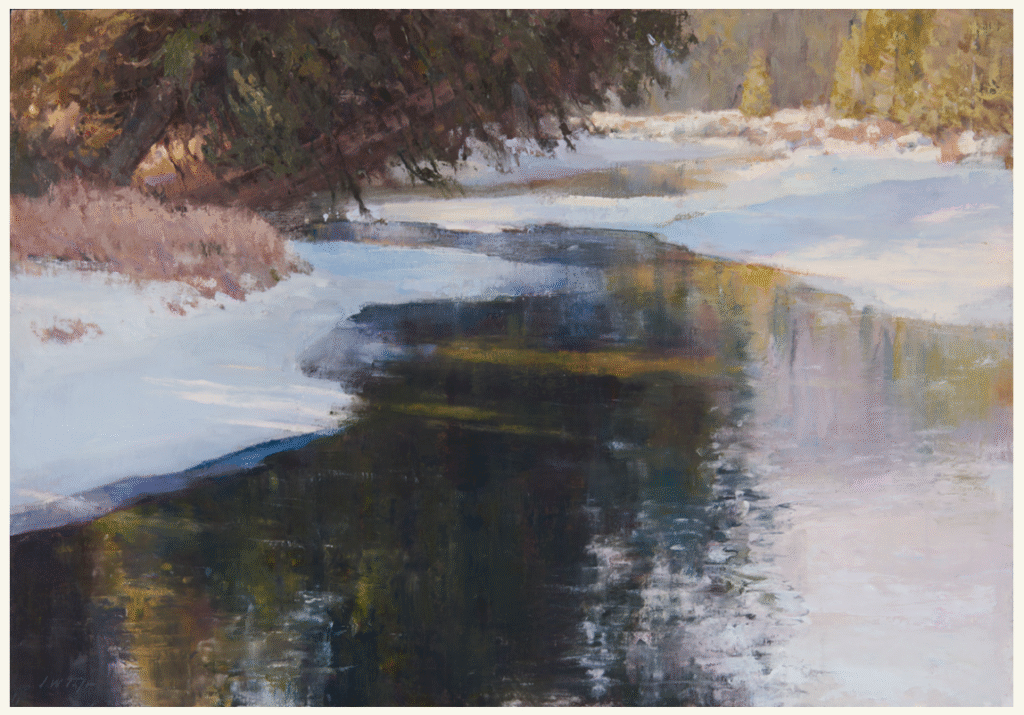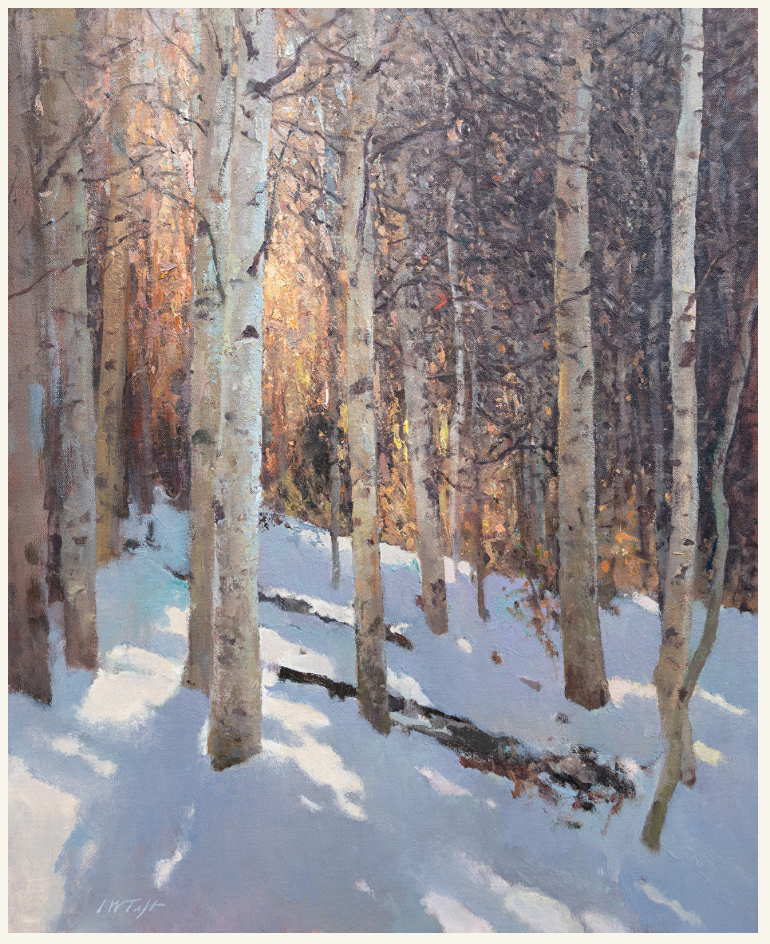John Taft—
Get Some dynamic going! Workshop
Note: Refunds minus the credit card transaction fee are available up to four weeks before the beginning of the workshop. After that, the student must find a replacement and negotiate payment with the replacement. If you need to cancel, contact us. The team may be able to help find a replacement. Please see the LAA Cancellation and Refund Policy.
LAA Members: Use your member code during check-out for a discounted price. The member code can be found in your membership confirmation email and any LAA newsletter.
Get Some Dynamic Going!
DESIGN AND COMPOSITION IN PAINTING
Jan 16-17, 2026 9:00 AM – 3:00 PM
Instructor: John Taft
LOUISVILLE ART CENTER
801 Grant Ave, Louisville, CO 80027
Member $110
Non-member $170
There’s symmetry and then there is dynamic symmetry. The first is much more static and the other, no matter the subject, has potential for much more interest and harmony…qualities of all fine art.
In this 2-Day composition in painting workshop, we will touch on the subject of dynamic symmetry during the instruction which will include looking at and analyzing a number of master works. We will discuss various principles from this study, and then consider how they can be applied to the subjects we will be painting from photos in the studio or you can paint a still life. The instruction is applicable to any subject.
The instructor will demonstrate in oils, but the student can use the painting medium of their choice.
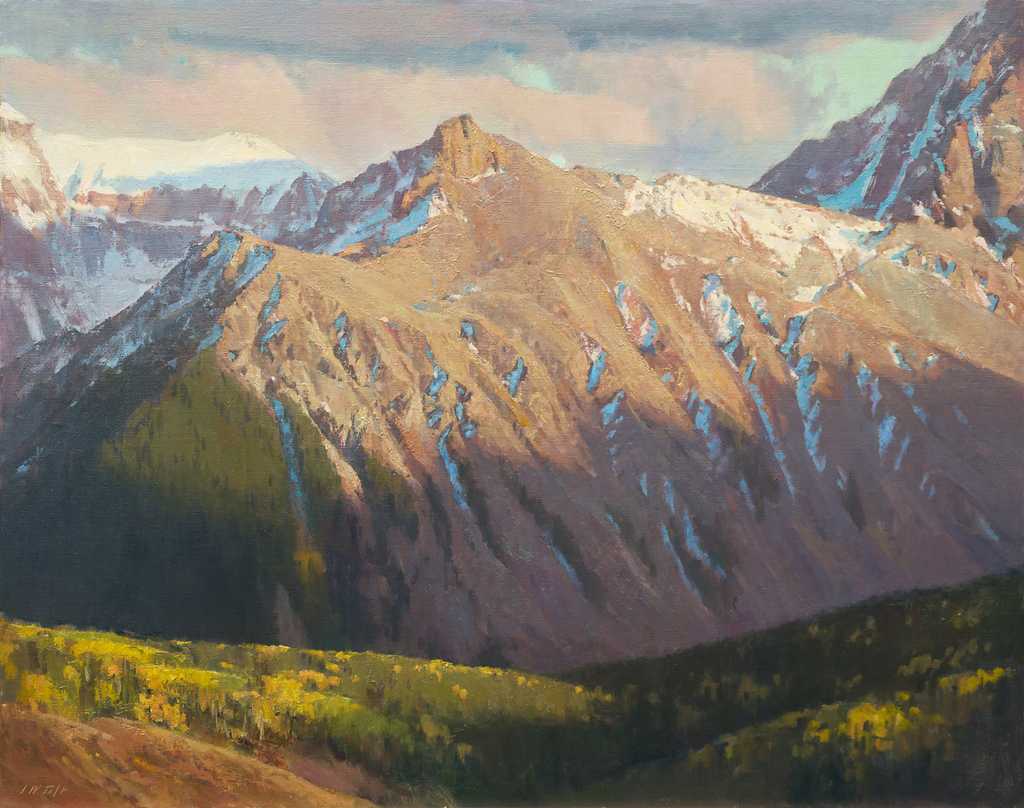
“John is great at tuning in to what we each are trying to get out of the workshop, and what we each need to do to improve our paintings.”
A recent student comment
John Taft
Originally from western New York, the Rocky Mountain west caught John’s eye over multiple trips across this great country during his college years at Art Center College of Design in Pasadena, California. John worked as a designer/art director in the television industry for 18 years in L.A., Minneapolis, and primarily in New York City. The growing artistic call eventually led John in 2004 to leave New York, and move to Colorado with his young family to pursue painting.
John quickly established himself in the art world. He has had multiple solo shows, has been in numerous national shows, including the Coors Western Art show in Denver, New York’s Salmagundi Club’s American Masters show, and multiple Oil Painters of America National shows where he has won several awards, including two Gold Awards. In 2022, his painting, “Thunder Run”, was added to the permanent collection at the Museum of Western Art in Kerrville, Texas. He has been the subject of feature articles in both Southwest Art Magazine and Western Art and Architecture.
John lives in Longmont and is represented in Colorado by Claggett-Rey Gallery in Edwards, and Ballard Fine Art in Sheridan, Wyoming.
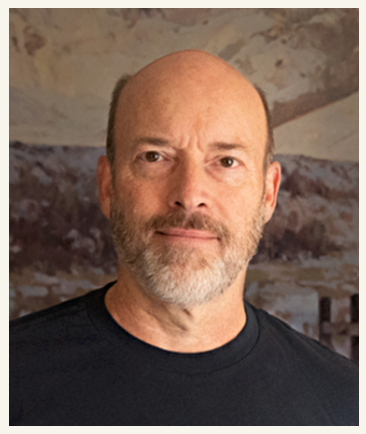
Some of John’s work:
MATERIALS:
I intend to paint in oil during the workshop. However, you can work in the medium of your choice, whether oil, watercolor, acrylic, gouache, pastels or even drawing materials. The design principles are universal.
- REFERENCE: I will lean toward the landscape as a subject, but this will be an indoor workshop, so Please bring:
- Several photos to choose to work from, these can be of any subject of your interest, such as landscape, your neighbor’s horse, etc.
- I suggest printing them out large enough and with some quality so that they are decent reference.
- You can also bring a few objects to arrange on a table top as a still life, such as cups and pitchers, bowls of fruit, a plant/flowers, maybe a piece of fabric on which to lay your objects, etc.
- Whatever your reference, whether from life or photos, we will seek to apply some design principles.
- SKETCHBOOK AND PENCILS
- For note taking and doing a variety of designs. I am planning on us doing a couple monochromatic designs per page before moving on to painting in color on panels.
- VARIATION: Instead of painting in a sketchbook on thin paper, feel free to bring heavier multimedia paper that will accept you medium. These can be just regular letter size papers. We will likely use only a few sheets or pages from your sketchbook.
- Artist masking tape, ¾” or 1”:
- This is not mandatory, but handy to mask off our designs on paper before painting.
- Small T-Square and triangle with a right-angle corner if you have them. At least bring a straight edge/ruler – 12” or 18”.
- We will not get too technical (well, we might for a few minutes), but I will show you how to divide up your panel geometrically so as to assist you as you develop your design.
- T-square
- Triangle
- Paint Panels:
- 4-6 panels – size 8 x 10, or 9 x 12.
- VARIATION: an 11 x 14 panel that we will divide into quarters, using the masking tape.
- A good recommended inexpensive panel for these exercises: Master’s Touch “Watercolor Canvas Panel” (Hobby Lobby brand) The Watercolor version is for “all media” and is finer and preferable to me for these exercises than their “Canvas Panel”. www.hobbylobby.com
- PAINT:
- This section regards oil paint. If not using oil, bring some colors along the lines I list below. You will need at least the three primaries and white for your pallet.
- I use mostly Windsor Newton (professional grade), Gamblin and Utrecht, which have a good price point for the quality. I treat myself occasionally to Michael Harding paints.
- Recently, when outside, I have been mixing using just three primaries and white. If you have not worked this way at some point, it is a very good exercise before you begin expanding your pallet. That being said, here is my standard pallet of colors which provide a very good range of colors when mixed:
- Titanium White or Untrecht White
- Cadmium Yellow Pale (or light)
- Yellow Ochre Pale
- Cadmium Yellow Deep, or Cad orange
- Cadmium Red /Cad Red Light
- Alizarin Crimson – lightfast version: Alizarin Permanent (Gamblin)
- Ultramarine Blue
- Viridian
- Burnt Sienna or Transparent Red Oxide
- (Rembrandt brand is a good Transparent Red Oxide)
Below are the colors I have added over the years and use at my discretion to expand the range of colors I can mix. You don’t need these for the workshop.
- Cadmium Yellow Lemon
- Indian Yellow
- Cadmium Orange
- Quinacridone Red or Rose
- Winsor and Newton’s Mauve Blue Shade (a violet)
- Cobalt Blue
- Thalo Blue
- Sap Green
- SOLVENT:
- Odorless Mineral Spirits (OMS) for thinning and cleaning oil. I highly recommend the clean, odorless mineral spirits Gamsol, from Gamblin. There are other makers of OMS for artists/conservators. No turpentine or similar solvents.
- MEDIUM:
- I don’t think a medium is necessary for this workshop, but I do occasionally use medium while painting, usually when working in studio. Gamblin has a good line of mediums worth exploring. They include Galkyd Lite, Galkyd, Neo Megelp, and Solvent Free Gel. They are all similar and yet subtly distinct from each other. Some of these come in tubes, which make for easy transport. To learn more about Gamblin products, check out their great site: www.gamblincolors.com. Also, Michael Harding Paints has come out with a line of “Miracle Medium” which I plan to explore.
- BRUSHES:
- Whatever you like. You don’t need all of these for your workshop, but this covers what I use generally when painting studio work: I use mostly bristle brushes, but also some synthetics.
- There are a lot to choose from. I primarily use bristle flats, (long and rectangular), but also filbets and rounds. I recommend a range of sizes, at least 2 of each—#2, 4, 6 and 8. I also like using rounds occasionally for detail.
- Quality bristle brands I like are Robert Simmons-Signet, Silver-Grand Prix, Utrecht model #209, Utrecht rhenish 201 line, Rosemary—Ivory line, Princeton Dakota and Master’s Touch, synthetic filberts from Hobby Lobby—this list goes on and on. The synthetic brushes seem to work quite nicely with the finer “Watercolor” panels from Master’s Touch (mentioned above). As in color, see what suits you.
- PALETTE KNIFE
- I use a 2” knife for mixing when working small (RGM 005) and a larger one (RGM 033) for larger, in studio work. Occasionally I use a pallet knife to apply paint. Quality matters. I have found Blick’s RGM line from Italy to have a nice “bend” quality as well as being durable. www.dickblick.com
- PORTABLE EASEL:
- I think most of you will need an easel of some sort, whether you stand or sit at a table.
- The traditional French easel – by Julian (cheap imitations are often very cheap). This is what I bought originally and still on occasion, primarily as a back-up studio study easel.
- Here are some recommendations for outdoor location painting that often work nicely indoors as well:
- Stradaeasel.com is a choice for many.
- Alla Prima Pochade (http://www.allaprimapochade.com/)
- Easyl, (http://www.artworkessentials.com/products/Pro_P/) etc. works fine
- The Soltek Easel – also well liked
- Artist Joshua Been designed and sells outdoor easels. If you do buy one from him, be sure to tell him I sent you : ) https://www.prolificpainter.com/shop/daytripper-easel/
Again, regarding painting in oil:
- People use glass or wood for pallets with the easels. If you choose to use a wood pallet (what I use outside), condition the pallet with several thin coats of linseed oil over a week. This fills the grain, and eventually creates a very smooth and oil impregnated surface on which to mix paint. Then, as you use it, clean the pallet after each use, but leave a slight film of the muddy color. Eventually this seals the surface into an ideal and glass-like surface for mixing, the envy of purchasers of a fresh wooden pallet. I recommend developing the habit of cleaning the paint off the palette immediately when done so that it does not dry. If you let paint dry on the mixing area, it will stain the nice pallet. I’ve rushed off site a few times without cleaning my pallet, then realize a couple weeks later that the paint has dried. If it is a mess, I sand it down and then re-oil it.
- BAGS FOR TRASH
- MISCELLANEOUS: some of this relates primarily to outdoor painting…
- Wet panel carrier. RayMar makes lightweight durable ones.
- Darkish or neutral colored shirt to limit reflected light
- Bug spray
- Sun Screen
- Hat
- Smile
- Optional: Umbrella to provide shade in bright sun conditions (windy conditions will not allow it’s use).
- Bags for trash
- Absorbent paper towels
- Camera
- Collapsible seat
- Sketchbook
Get Some Dynamic Going!
DESIGN AND COMPOSITION IN PAINTING
Jan 16-17, 2026 9:00 AM – 3:00 PM
Instructor: John Taft
LAA Members: To get the discounted price, use your member code during check-out. The Member Code can be found in your membership confirmation email and any LAA Newsletter.
Questions? Go to the Contact Us form and be sure to specify this workshop with your question.
